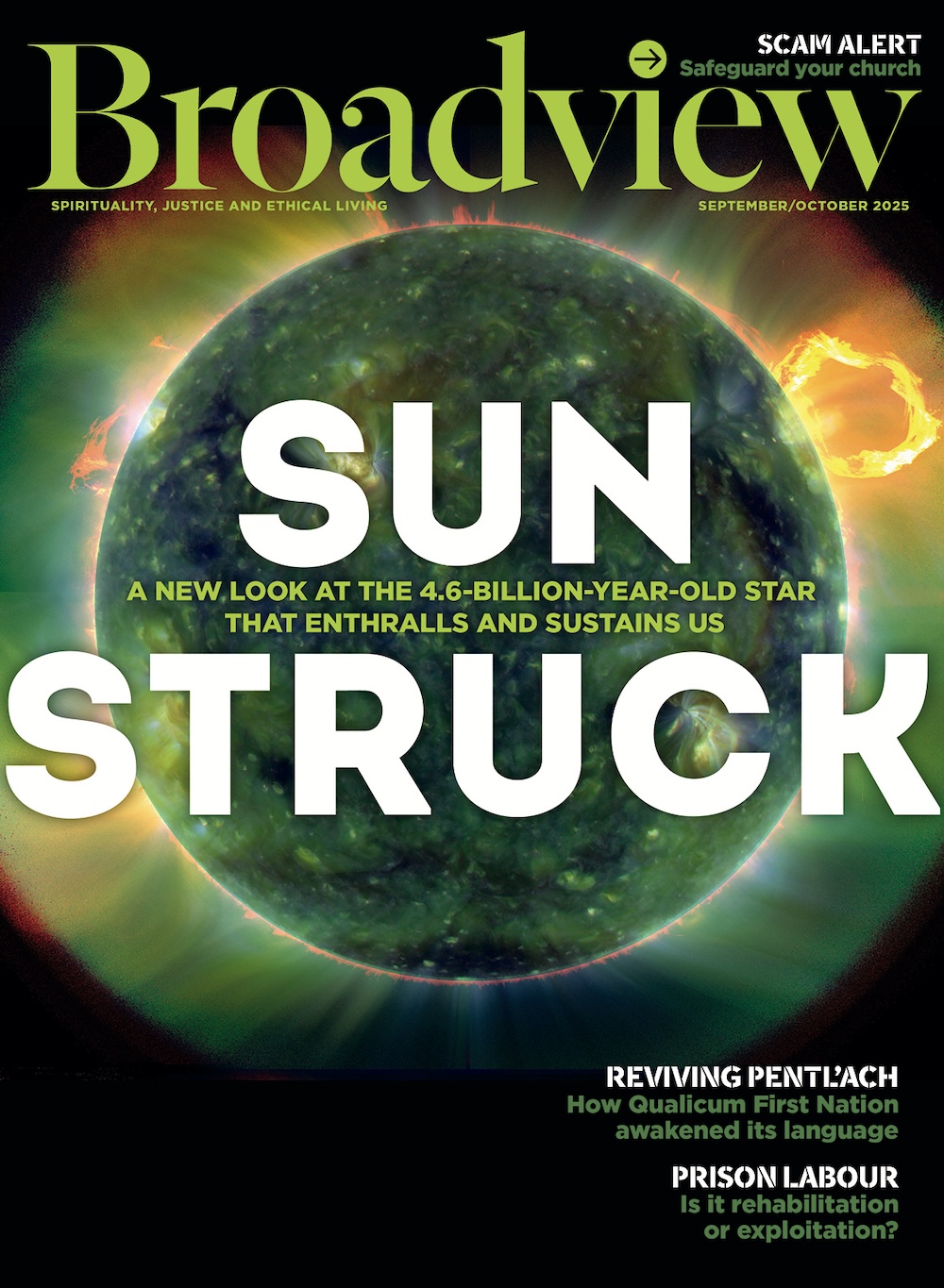In Anne Bokma’s latest Spiritual But Secular column, she reports on church’s attempts to attract folks who are fundamentally opposed to institutional churches. The “Unchurch” movement, she says, “is the latest initiative (along with Messy Church, jazz vespers and pub nights) that tries to grab hold of the slippery spiritual-but-not-religious (SBNR) demographic. But this is one group determined to wriggle free from the church’s net.”
Indeed, the author of Belief Without Borders: Inside the Minds of the Spiritual But Not Religious (2014) says that this group really isn’t interested in church. So what other business besides faith, I wondered, would work so hard to attract a group of customers who just don’t want what’s being sold?
You may unsubscribe from any of our newsletters at any time.
Still, no one actually knows how many Canadians self-identify as SBNR. Statistics Canada won’t ask about religion again on a census until 2021. But in 2011, about a quarter of Canadians (nearly eight million) said that they had no religious affiliation — up by 50 percent in the decade since 2001. And the number may be much higher; how many of the two million people who checked the “United Church of Canada” box on their 2011 Census form haven’t been in years? Maybe half of Canadians are some form of SBNR? Maybe many more are.
Into these murky questions wades a small army of marketers and public relations professionals. They’re hoping slick, modern, digital communications tools are the missing link between church rejecters and full pews.
What’s at stake? Well, cynically, the church’s future (the United Church, alone, lost a million members and adherents between 2001 and 2011, according to Statistics Canada). So packing the pews with more of these folks and filling collection plates with their earnings is an obvious church survival goal.
Not so cynically, what’s at stake is the opportunity for SBNRs to enrich their own lives and the world by allowing themselves to embrace ancient tradition, a community of faith and the spiritual discipline afforded by religion.
Here are five highly questionable tips for marketing to SBNRs
1. Get them with design
Source: Church Marketing Sucks: an interview with designer Jim LePage (probably the most sophisticated of the online resources)
Premise: Church marketing materials are often awful. Be creative and honest in your materials, and you’ll reach people in new ways.
Quote: “Design and art have huge potential to question, provoke and push people out of their comfort zones. Sadly, most churches simply view it as a means to an end — a way to reinforce their brand or increase giving.”
Will it work on SBNRs? Maybe. As Bokma’s piece points out, Millennials have less religious baggage than older Canadians. And bold visual design is a critical tool for any 21st century institution.
2. Decorate neighbourhood doors with cute door hangers! (DoorHanger Ministry has its own e-book)
Source: Outreach: Share God’s Love, a Colorado Springs-based Christian answer to VistaPrint
Premise: Let people know what’s happening, and they’ll come flocking
Quote: “Experts will tell you that personal invitations, having your core team and members inviting people, is the most effective way. But what if you want to reach further on a limited budget? DoorHangers may be the best answer.”
Will it work on SBNRs? Unlikely. Thought the “Bait of Satan” door hanger might get hung ironically on the fridge.
3. Facebook ads
Source: Missional Marketing: Expanding the Kingdom, a social media management service for tech-averse churches
Premise: People spend a lot of time on Facebook. Advertise there.
Quote: “FACEBOOK’S MASSIVE AUDIENCE WILL INCLUDE PEOPLE WHO DO NOT GO TO CHURCH. MORE IMPORTANTLY, WE CAN FIND THEM. Using the tools in our platform, we reach UNchurched people.”
Will it work on SBNRs? Well, we all know how much people love Facebook ads.
4. Put it on the lead pastor’s shoulders
Source: Church Marketing University, which offers several church marketing courses online — from enhanced secretarial skills to a better in-church hospitality experience
Premise: Church is about people and relationships, so really work hard on building those relationships
Quote: “Over 86 percent of rapidly growing churches have one thing in common: their lead pastor prioritizes connecting with the next generation.”
Will it work on SBNRs? This course is focused on church plants, and the preview video really pushes the idea of creating an exciting church environment in which people can connect with God. Because it emphasizes human connection, this course seems to be the best bet in connecting with people, generally.
5. Brand it!
Source: Churchleaders.com, a clearing-house of advice for successful churches
Premise: Articulate what your church is and why it’s relevant visually and simply
Quote: “Grasp what your community wants and needs, and you can become a great brand. What problems are you solving for your community? On a practical level? It’s been too long since the church has asked this question.”
Will it work on SBNRs? Not by itself. But as the above quote notes, figuring out what your church offers locals — and why — is a pretty great place to start, even if you never develop a logo.













